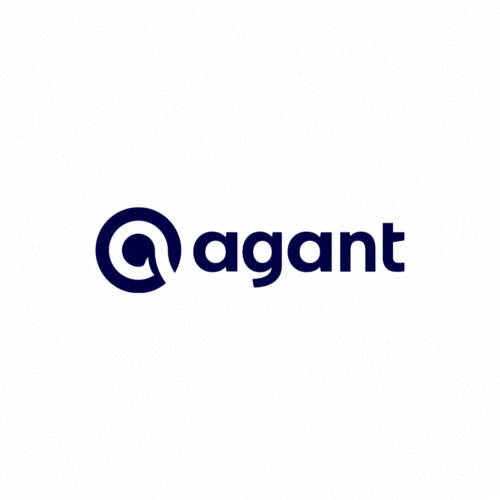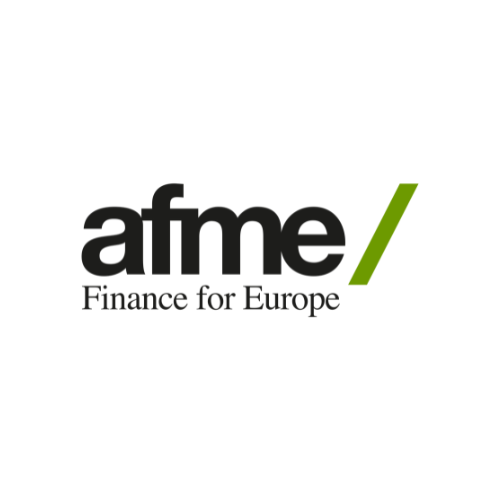The Digital Pound Foundation (DPF) welcomes the opportunity to respond to the Financial Conduct Authority’s (the FCA’s) Discussion Paper 23/4 on Regulating cryptoassets Phase 1: Stablecoins (the “Discussion Paper”). We would like to thank the FCA for the in-depth and comprehensive analysis that has been undertaken in drafting the Discussion Paper, as well as the opportunity to provide our comments. We respectfully request that the FCA takes them into consideration as you consider the policy direction and development of a regulatory framework for fiat-backed stablecoins. We would also welcome the opportunity for ongoing engagement with the FCA on the further development and phases for the regulation of cryptoassets. Should the FCA wish to discuss any of the points raised as part of this feedback, please do not hesitate to contact us.
The DPF’s stated remit is to advocate for and support the implementation of a well-designed digital Pound, in both publicly and privately issued forms, and a diverse, effective and competitive ecosystem for these new forms of digital money in the UK. We believe that a digital Pound – in either / both public or private form – will form an integral and important part of the future UK payments landscape, and a critical determining factor in the UK’s continued leadership in financial services and Fintech at a global level. As such, we appreciate the chance to share our thoughts and expertise on the future regulatory framework for stablecoins in the UK.
The DPF’s members are uniquely qualified and positioned to contribute to the discussion around these topics, given their active involvement and engagement in the development of new forms of digital money – whether as professional service and technology providers for CBDC projects, private issuers of digital money, or firms whose business models depend on the existence of new forms of digital money. Our response to this Discussion Paper has also been developed in collaboration with our partners, Global Digital Finance and Stablecoin Standard.
Our response is therefore informed by a collection of forward-looking viewpoints and an active envisaging of the future of the payments landscape, the ecosystem of new forms of digital money and of the potential future interaction and interoperability between different payments market participants, payments infrastructures and different forms of money.
In formulating our response to the Discussion Paper, our members have identified the following key areas which we believe require more careful consideration, given their complexity and the potential for unintended consequences to arise:
- Treatment of overseas stablecoins – We are broadly supportive of the Treasury’s considerations around how to position the UK globally with respect to overseas stablecoins, and of its motivations in proposing a regime under which overseas stablecoins may be used for payments in the UK, in which appropriate safeguards are in place. As a starting point, we would like to differentiate between GBP-denominated stablecoins having an overseas issuer, and foreign-currency-denominated stablecoins that are issued overseas. Any proposals should therefore take into account the likely purposes for which foreign-issued non-GBP denominated stablecoins may be used by UK consumers – an area which, in our view, requires significant additional thought and exploration. This is further discussed in our response to Question 39.
- The proposed “payments arranger” regime, and potential alternatives – The Discussion Paper proposes that one way in which an overseas stablecoin’s access to the UK payment chain would involve assessment by a firm or firms acting as “payment arrangers”. We would welcome further detail around how the FCA envisages this concept of payment arrangers working in practice, including the expectations in relation around the types of entity that can become a payment arranger, whether this function can be performed within part of the issuer’s Group, or whether it requires an independent third party, whether one payment arranger can be used for multiple stablecoins, and how an authorisation regime would be structured. We are also interested in the commercial incentives for payment arrangers, particularly given the potential levels of liability to which they may be exposed.
We propose an alternative approach for consideration by the Treasury and FCA, whereby overseas stablecoin issuers could be able to register within the proposed regulatory framework, albeit with amended requirements in relation to company and senior manager presence. This could be accomplished in part through a framework based on limited principles of unilateral recognition of foreign regulatory frameworks that abide by international standards (such as the IOSCO / FSB / PFMI guidelines). Allowing foreign stablecoin issuers to operate in the UK market, maintaining a smaller local presence whilst still having a degree of accountability to and oversight by the FCA, will allow these issuers to benefit from intra-group synergies and the resource – and cost – optimisation that comes with this, whilst also allowing UK consumers and businesses access to the most widely used and established stablecoins in the market. These points are further discussed in our response to Question 39.
- Custody scope and requirements – With respect to custody of backing assets, the regulatory framework for regulated stablecoin issuers should focus on the objectives of ensuring adequate protections of backing assets, including protection of stablecoin holders in the event of insolvency and priority of holders over other creditors. With respect to the custody of the stablecoin on behalf of the end user, we note that the Discussion Paper implies that custody of a cryptoasset (including stablecoins) is the activity of holding the private key that allows access to and use of the cryptoasset. It does not cover situations in which a custodian would hold the seed phrase, for example, or have control over the asset by any means other than by holding the private key. This is a narrow interpretation of “custody”, and may result in a situation where firms providing custody solutions look for workarounds to avoid being captured as custodians for the purpose of these rules. In our view, it would be prudent to address the notion of control over the asset in a future regulatory framework.
We also note the FCA’s proposals for two different models of custody – one in which a regulated firm provides custody services, and another “independent third party” model in which the third party has the legal liability to the customer. We would appreciate further clarity on the regulatory framework under which this model would operate, and what it might be envisaged to look like in practice.
- Recommendations for backing assets – We believe that the proposed limitations around the types of backing assets that might be held – in the form of government treasury debt instruments having a maturity of one year or less, and short term cash deposits – are more suited to the type of stablecoins used at a systemic level and covered in the Bank of England’s proposals in its contemporaneous Discussion Paper on the Regulatory regime for systemic payment systems using stablecoins and related service providers (“the BoE Discussion Paper”). Furthermore, they may not take into account the many options available to safely manage reserves, and how these might relate to the many different ways in which stablecoins may be used.
Our view is that the FCA’s current proposal, in the context of non-systemic stablecoins, is unnecessarily narrow and that the type of backing assets permitted should be extended to include a limited range of permissible high-quality liquid assets (HQLA), whilst still meeting the FCA’s overall objectives for its future stablecoins regime. This would be in line with the corresponding provisions set out in other UK domestic frameworks (such as those underpinning EMI safeguarding requirements) and the proposed frameworks for stablecoins in other major jurisdictions. These points are further expanded upon in our responses to Questions 4, 6, 8 and 9.
DPF members also identified the following areas which, whilst not explicitly covered in the Discussion Paper, are in our view worthy of further consideration and on which we would welcome further clarity from the FCA:
- The regulatory treatment of tokenised e-money vs. stablecoins – it remains unclear where the boundary or potential overlaps between e-money and tokenised e-money lies, or which regulatory regime would take precedence for tokenised e-money: the e-money regime or the stablecoin regime. In our view it is essential that tokenised e-money is treated appropriately and proportionately in terms of the proposed regulatory framework, and that any differences between the future regime for tokenised e-money versus that for non-tokenised “traditional” e-money reflect differences in the risk profile and potential activity associated with the former, as opposed to simply differentiating between the two based on their technological underpinnings.
We strongly recommend that the FCA provides clarity on the treatment of tokenised e-money and ensures that the future framework for this subset of fiat-referenced stablecoins is clear, consistent and not contradictory with the treatment of either non-tokenised e-money, or the superset of stablecoins. In particular, such treatment should not be unfairly prejudiced against tokenised e-money and its issuers when the nature of backing assets and reserves are considered vis-a-vis the current requirements in place for non-tokenised e-money.
- The UK regime in the context of a global market – Consideration should be given as to how the FCA’s proposals might impact the attractiveness of the UK market. At one extreme, issuers may be disincentivised to establish UK operations if they are deemed not to be commercially viable, or to require a level of business model adaptation that sits at odds with other regulatory regimes globally. There is a potential risk that non-sterling denominated stablecoins issued in other jurisdictions may become used, at scale, for certain retail purposes in the UK. Overall, the practical implementation would need specificity and greater clarity in order to avoid perverse outcomes for consumers.
As digital currencies continue to evolve, there should be discussion at global level as to how differently denominated currencies should interact with each other, particularly given their enhanced abilities to do within the ecosystem of new forms of digital money. Whilst equivalence is often not feasible or achievable in practice, we believe that principles of mutual recognition should be explored, further to the international recommendations for global coordination put forward by the FSB, BIS and other multilateral agencies.
Discussion Paper Response
Chapter 2: A new stablecoin regime
Question 1
Should the proposed regime differentiate between issuers of regulated stablecoins used for wholesale purposes and those used for retail purposes? If so, please explain how.
No, we do not think that the proposed regime should differentiate between issuers of regulated stablecoins used for wholesale purposes and those used for retail purposes. In our view, such a treatment would lead to a potentially arbitrary distinction being drawn between stablecoins used for retail and / or wholesale purposes. It is both likely, and feasible, that the same stablecoin could be used for both retail and wholesale purposes, as well as stablecoins being used for non-payments purposes; and, indeed, the vast majority of stablecoins in circulation today are used interchangeably by service providers for business and treasury management and retail users for payments. Stablecoins also have multiple use cases beyond payments, including but not limited to trading, investment, as a store of value, and as collateral to transactions. As such, we would encourage the FCA, as also noted in our response to the Bank of England’s (the Bank’s) Discussion Paper on the Regulatory regime for systemic payment systems using stablecoins and related service providers (the “BoE Discussion Paper”), to make clear delineations on what the framework will capture.
We are supportive of a universal regulatory framework that is applicable to all stablecoin issuers, with some proportionate distinction between those used at a systemic level, and therefore capable of giving rise to financial stability risks, and those used at a non-systemic level. Such a regulatory framework should ensure outcomes of consumer protection and preservation of the singleness and uniformity of money. The usage of the stablecoins for wholesale or retail purposes should not have a bearing on the issuer (although, as in the current regulatory environment, the payment and settlement systems in which the stablecoin is used may themselves be subject to different regulatory regimes based on the specific activities and risks involved).
In the context of the Bank of England’s current proposals for stablecoins used in retail systemic payments systems to be fully backed by cash reserves held at the central bank, we observe that such a stablecoin would essentially be a counterparty-risk-free digital settlement asset, and would have enormous appeal as a wholesale settlement asset (especially in the context of regulated digital asset markets). Conversely, a regulatory framework in which it is possible for the same stablecoin to be used for both retail and wholesale purposes, but under different regulatory frameworks applicable to each contextual use, then this may result in unintentionally creating an artificial limitation on the stablecoin itself. Within traditional financial services, the requirements would be applicable to the firm undertaking a regulated activity involving a form of money, as opposed to being applicable to the money itself or to the issuer of the money in the context of its ultimate usage, so we would not encourage creating this distinction.
Whilst we believe that the issuance of a stablecoin should be agnostic as to its usage (i.e. retail vs wholesale), DPF members also think that it would be useful and beneficial to industry for the FCA to further examine the potential implications of the proposed regime for wholesale use cases and applications, and to provide clarity on the treatment of stablecoins when used in a wholesale context (for example, whether this might entail the creation of a separate regulatory framework for wholesale settlement systems, or whether it is envisaged to be captured under the existing regimes or an extension thereof).
Finally, it would also be useful for the FCA to clarify if it is the intention of the proposed regime to capture within its scope bank-issued stablecoins and other forms of tokenised fiat money, including but not limited to tokenised deposits.
Question 2
Do you agree with our assessment of the type of costs (both direct and indirect) which may materialise as a result of our proposed regime? Are there other types of costs we should consider?
The Discussion Paper proposes that, where the Treasury recognises a stablecoin firm regulated under the FCA’s regime as an operator of a (potentially or actually) systemic retail payment system or service provider using stablecoins, then the firm will be dual regulated by the FCA (from a conduct perspective) and the Bank of England (from a prudential perspective).
In our response to the BoE Discussion Paper, we have extensively discussed the potential for a “cliff-edge risk” to arise, in that a decision to classify an existing stablecoin-based payment system as systemic would likely require significant and drastic changes to an issuer and / or operator’s business model in its / their transition from the non-systemic to systemic regulatory frameworks. This includes the requirement, as per the Bank of England discussion paper, for issuers to fully back stablecoins with deposits held at the Bank of England without receiving any interest.
The proposed FCA rules for assets backing non-systemic stablecoins include a slightly wider range of HQLA, including not only cash reserves but also short-term UK government debt having a maturity not exceeding one year. Whilst still not a broad range, this nevertheless leaves the door ajar for issuers to generate revenue based on the income accruing to their backing assets under management (a model which is in line with that of the majority of reserve-backed stablecoin issuers today). As an issuer transitions from systemic to non-systemic, cliff-edge risks may arise from the discrepancy between the two regimes for backing assets.
For example, significant changes would be needed to the firm’s business model under the current proposals, as they transition from non-systemic to systemic regimes. For an issuer operating at a non-systemic level, they could have a model whereby they are able to hold a combination of eligible HQLA and cash reserves as backing assets, generating income off the assets (and thus lowering – if not eliminating – transaction fees with the associated benefits to businesses and consumers). When the same issuer transitions to the systemic level, however, they would not only need to change their entire treasury management model and function, but also would be restricted to generating income from transaction fees or access fees (assuming they are able to capture these from the operator of the payment system on which the stablecoin is used). This would be a significant burden that may also have the unintended consequence of discouraging issuers from becoming systemic.
A potential cost which the FCA should consider relates to the proposed regime’s potential effect on UK competitiveness with respect to FinTech and financial services. If the regime is unduly restrictive or not fit for purpose, it could potentially lead to consumer harms – manifesting both in the failure of UK stablecoin firms, and if consumers are forced, by a lack of adequate competitive choices within the UK, to look overseas and/or to unregulated firms for provision of stablecoin-related services, or consumers and businesses miss out on the potential benefits of stablecoin-based payment systems altogether. In the context of these current proposals, we also question whether such a stringent requirement on systemic payment systems using stablecoins would create barriers and a loss of appeal for overseas investors looking to invest in the UK stablecoin and future payments / settlement ecosystem.
Question 3
Do you agree with our assessment above, and throughout this DP, that benefits, including cheaper settlement of payment transactions, reduced consumer harm, reduced uncertainty, increased competition, could materialise from regulating fiat-backed stablecoins as a means of payment? Are there other benefits which we have not identified?
Yes, the DPF agrees with and is supportive of these benefits.
Chapter 3: Backing assets and redemption
Question 4
Do you agree with our proposed approach to regulating stablecoin backing assets? In particular do you agree with limiting acceptable backing assets to government treasury debt instruments (with maturities of one year or less) and short-term cash deposits? If not, why not? Do you envision significant costs from the proposal? If so, please explain.
We agree with the FCA that a future regime for backing assets should deliver the following outcomes: ensuring that the stablecoin maintains its value relative to its reference currency or currencies, and that the stablecoin can be promptly redeemed at par value by any holder of the stablecoin. These objectives are integral to ultimately ensuring that the singleness and uniformity of the Pound sterling is preserved across all regulated GBP-referenced stablecoins.
That said, we believe that the proposed limitations around the types of backing assets that might be held – in the form of government treasury debt instruments having a maturity of one year or less, and short term cash deposits – are more suited to the type of stablecoins used at a systemic level and covered in the Bank of England’s proposals in its contemporaneous Discussion Paper on the Regulatory regime for systemic payment systems using stablecoins and related service providers (“the BoE Discussion Paper”). Furthermore, they may not take into account the many options available to safely manage reserves, and how these might relate to the many different ways in which stablecoins may be used.
Our view is that the FCA’s current proposal, in the context of non-systemic stablecoins, is unnecessarily narrow and that the type of backing assets permitted should be extended to include a limited range of permissible high-quality liquid assets (HQLA), whilst still meeting the FCA’s overall objectives for its future stablecoins regime. This would be in line with the corresponding provisions set out in other frameworks (see below). Furthermore, this would also be in line with the UK’s own domestic regime for E-money institutions (EMIs). EMIs have a broader range of backing assets and safeguarding options available to them present. We question the FCA’s motivations in proposing a regime that is more stringent with respect to stablecoin issuers, and would welcome further clarity on the rationale and reasoning behind this approach;. for example, what different or additional risks are stablecoin issuers bringing to the table which EMI issuers are not?
For example, other stablecoin proposals in other jurisdictions (including the EU’s Markets in Crypto Assets Regulation) have presented alternative approaches that set a more flexible standard for backing assets. The HKMA Proposals for example sets out that:
“6.2.2. Investment limitations: The reserve assets must be of high quality and high liquidity with minimal market, credit and concentration risk. Reserve assets should be held in the referenced currency, with flexibility allowed on a case-by-case basis, subject to approval by the MA. In determining the composition of reserve assets, the FRS issuer should take into account the
liquidity requirements of the FRS concerned and how the reserve assets will be managed and invested to meet such requirements. The MA will need to be satisfied that the types of investment the FRS issuer proposes to hold are appropriate. In this regard, the FRS issuer should put in place an investment policy for reserve assets that is reviewed for suitability on a sufficiently frequent basis as the FRS business develops.”
We would note of course and accept that prudential requirements might need to be different or more stringent as appropriate, based on composition of a firm’s permitted backing assets (which in turn should be determined based on the individual firm’s sophistication and expertise in terms of risk and treasury management). Firms should also have comprehensive valuations methodologies and intra-day (if not real-time) reconciliations processes in place to ensure that at least a 1:1 backing is maintained (we note that under an expanded HQLA regime, over-collateralisation situations may arise). For example, short-dated reverse repurchase agreements overcollateralised by government debt instruments present a potential opportunity for alternative means of managing liquidity, credit and duration risk. For these, as well as other unique arrangements, it may be appropriate for the framework to support alternative arrangements for backing assets.
The introduction of a less restrictive regime for backing assets, that encompassed a wider range of permissible HQLA, could also be accompanied by requirements for over-collateralisation in the case of some forms of backing asset, and / or capital reserve requirements to cover potential shortfalls in the event of a liquidation event.
At present, the overwhelming majority of issuers of asset-backed, fiat-referenced stablecoins (and all of those used at scale) generate income from their portfolio of backing assets – a model which helps to keep transaction fees low across networks, and ensures that end users are able to truly benefit from the efficiencies and lower costs associated with new forms of digital money. In its current form, our members question the commercial viability of stablecoin issuers’ business models, given that the means of generating revenue will be limited to transaction fees and potentially access fees. This runs contrary to the FCA’s mandate to promote competition and positive change. The current proposal also has the potential to disincentivise UK firms compared to those based in the EU or elsewhere, potentially resulting in perverse outcomes for UK consumers and businesses.
Question 5
Do you consider that a regulated issuer’s backing assets should only be held in the same currency as the denomination of the underlying regulated stablecoin, or are there benefits to allowing partial backing in another currency? What risks may be presented in both business- as-usual or firm failure scenarios if multiple currencies are used?
Holding backing assets that are denominated in a currency other than the denomination of the underlying regulated stablecoin introduces FX risk to the interplay of credit, liquidity and market risk that must be managed by a stablecoin issuer. This in turn introduces more complexity to the treasury management functions and processes undertaken by stablecoin issuers. Such challenges are not insurmountable, and we would not necessarily advocate for a prohibition on non-GBP-denominated backing assets for a GBP-referenced non-systemic stablecoin (for example), although limiting backing assets to the same denomination as the stablecoin’s reference currency would seem prudent in the case of systemic stablecoins.
If the FCA were to widen permissible backing assets out to include those denominated in a different currency, then this might be restricted, for example, to AAA-rated short term government bonds, and regularly reviewed against the credit risk and market risk associated with those instruments.
Question 6
Do you agree that regulated stablecoin issuers should be able to retain, for their own benefit, the revenue derived from interest and returns from the backing assets. If not, why not?
The DPF firmly agrees with the FCA that regulated stablecoin issuers should be able to retain, for their own benefit, the revenue derived from interest and returns from backing assets. Such revenues play a key role in enabling the issuance of commercially-viable stablecoins that create greater efficiency and drive lower-cost transactions, as well as potential for innovative opportunities. We also strongly advocate that the FCA’s approach be carried across to the Bank of England’s framework for systemic stablecoins as well. If this model for revenue generation is not consistently supported across both regimes then it could result in cliff-edge risks for businesses when they transition from one regime to another, as we have noted elsewhere in our response.
Question 7
Do you agree with how the CASS regime could be applied and adapted for safeguarding regulated stablecoin backing assets? If not, why not? In particular:
i. Are there any practical, technological or legal obstacles to this approach?
ii. Are there any additional controls that need to be considered?
iii. Do you agree that once a regulated stablecoin issuer is authorised under our regime, they should back any regulated stablecoins that they mint and own? If not, why not? Are there operational or legal challenges with this approach?
We are aware that the FCA will be consulting later in the year on changes to the current safeguarding regime for payments and e-money firms to a CASS-style regime. The DPF broadly supports the FCA’s proposal on the understanding that, with respect to regulated stablecoin issuers, a CASS-style approach, with appropriate adaptations to reflect the differences between digital asset and traditional custodial models, aligned with the wider policy objective for safeguarding in the UK financial services market.
However, in our view the creation of a statutory trust regime is fundamentally flawed and inconsistent with the existing regulatory framework and consumer protection outcomes.
Overlap with Collective Investment Schemes
Section 235 of the Financial Services and Markets Act 2000 (“FSMA”) defines a “collective investment scheme” as an arrangement with respect to property, involving the pooling of assets from various participants, the purpose of which is to enable persons taking part in the arrangement to receive profits or income arising from the property. Crucially, the arrangement must be such that the participants do not have day-to-day control or management of the property, or the property must be managed as a whole.
The FCA proposes that the backing assets must be held on statutory trust for the benefit of the coinholders. The existence of a statutory trust implies that these backing assets are being managed by a third party (i.e., the custodian or issuer) for the community of coinholders. Should this proposal be taken forward, it could not be categorically excluded that this would not qualify as a collective investment scheme. If this is taken forward it is necessary to consider the introduction of suitable exclusions from the definition of collective investment schemes under section 235 FSMA.
Identification of Trust Beneficiaries
We note that the intention is to create a statutory trust for the benefit of coinholders. This is problematic because the fiduciary would not be able to identify all coinholders. Stablecoin issuers would typically deal with initial purchasers but could not identify all subsequent coinholders. More generally this would be inconsistent with the way the statutory trust under CASS works. Under CASS the trust is held for distribution purposes and compliance with the rules for the benefit of the “clients” of the relevant firm, for the payment of costs and then for other claims. For a stablecoin, it is possible that beneficiaries cannot be identified for many reasons and so, in the event of insolvency, the ability to distribute the trust property would be very complicated and would draw out the process. Further analysis would be required to determine whether such statutory trust could be created validly, as it is unclear that there would be certainty of object.
Treasury Coins
We understand the rationale that issuers should be required to comply with safeguarding rules so that all stablecoins in issuance – including those held in treasury wallets (DP 31.18 and 3.19)- are backed in accordance with the final requirements around backing assets.
In our view this construct potentially has a perverse outcome – in the event of a liquidation or other crisis event that requires a repayment of the safeguarded funds the issuing firm benefits from the same protections as other coinholders. We question if this is an equitable outcome particularly if the repayment arises from malfeasance by the issuing firm. We would suggest a prioritisation on repayment of funds to coinholders before any repayment to the issuer itself, and also that such funds be considered then part of the general pool of available funds to be prioritised in an insolvency process across creditors.
Question 8
We have outlined two models that we are aware of for how the backing assets of a regulated stablecoin are safeguarded. Please could you explain your thoughts on the following:
i. Should regulated stablecoin issuers be required to appoint an independent custodian to safeguard backing assets?
ii. What are the benefits and risks of this model?
iii. Are there alternative ways outside of the two models that could create the same, or increased, levels of consumer protection?
The proposed framework envisages that permitted backing assets would include cash, and sovereign bonds having a maturity of less than one year. The FCA has proposed two custody models for backing assets: one involving cash being held with a third party regulated financial institution, and the second involving the use of an “independent custodian” who would hold cash and / or non-cash backing assets directly for the benefit of the stablecoin holders. It is not clear exactly what this latter model would entail, or how a commercial / business model could be supported by the stablecoin issuer in this context, or how, logistically, redemptions for example would work.
With respect to custody of backing assets, the regulatory framework for regulated stablecoin issuers should focus on the objectives of ensuring adequate protections of backing assets, including protection of stablecoin holders in the event of insolvency and priority of holders over other creditors. While this can be achieved through appointment of an independent custodian, this may not be the only means of protecting ultimate holders. It is possible that alternative models could be developed in which an issuer is able to demonstrate adequately their ability to safeguard the assets.
Question 9
Do you agree with our proposed approach towards the redemption of regulated stablecoins? In particular:
i. Do you foresee any operational challenges to providing redemption to any and all holders of regulated stablecoins by the end of the next UK business day? Can you give any examples of situations whether this might this be difficult to deliver?
The Discussion Paper proposes ensuring redemption at par to all holders of the regulated stablecoin by the end of the next business day after receiving the redemption request. While we agree in principle with the need for all issuers to provide timely redemption of holder assets, the proposed standard of one business day may be impractical and may also create AML/CFT risks. Our view is therefore that this requirement may prove to be operationally challenging and impractical for issuers to achieve, and should be reconsidered by the FCA.
As written, the standard requires the redemption period to begin at the time a stablecoin holder submits documentation for AML/CFT checks. As a result, a T+1 timeline would in effect give rise to a requirement to complete all AML/CFT checks and processes within one business day, which may not be operationally feasible, particularly in the case of higher-risk holders. From a purely operational and logistical perspective, we note as well that redemptions above £1m which are paid out to a bank account (as they are likely to be in the absence of a retail CBDC), would not be able to use Faster Payments (FPS) as a payment channel and would, instead, be dependent on CHAPS, which is only operational from 6am to 6pm thereby placing further pressure on the timescales. The Bank of England is considering extending CHAPS operating hours, but that is not happening yet.
This could be particularly true for overseas stablecoin issuers with banking partners or within a jurisdiction that does not generally operate to T+1 settlement. We note that in other examples of stablecoin regulatory frameworks (for example, that of the EU), a timeframe for redemption is not prescribed, but rather left to the issuer to justify within its policy. We view this principles-based method as being a far more flexible and pragmatic means of ensuring that firms can meet the redemption demands, and ensure best consumer outcomes, whilst meeting their own regulatory obligations.
It may be possible to dispense with the requirement for AML/CFT checks where the coinholder is directly requesting that the redemption funds be paid out by the issuer to a regulated financial services provider such as a bank account, or a wallet provided by a regulated institution, in which case it could be assumed that the relevant checks had been completed as part of the on-boarding process to the regulated institution. This may not, however, be the case in all scenarios.
Other jurisdictions have introduced more pragmatic standards, including the Monetary Authority of Singapore which requires processing within T+5 business days, beginning on the date of request of a compliant holder (i.e. that has been successfully onboarded) while the New York Department of Financial Services requires processing of redemption requests not more than two full business days (T+2), begin
ning the day after a request is made, and only upon completion of successful onboarding of the holder.
ii. Should a regulated issuer be able to outsource, or involve a third party in delivering, any aspect of redemption? If so, please elaborate.
Yes, we are supportive of this, given that some issuers may be wholesale issuers, and some stablecoin market structures may involve intermediaries who face end-users, as opposed to the issuer itself facing the end-user.
iii. Are there any restrictions to redemption, beyond cost-reflective fees, that we should consider allowing? If so, please explain.
It may be prudent to allow issuers, under certain conditions, to restrict or cap the total notional redemption amount processed over a 24 hour (or other predefined) period, in order to manage liquidity risk and avoid triggering significant market movements in the underlying backing assets.
iv. What costs associated with our proposed redemption policy do you anticipate?
Issuers will take on the operational costs of processing redemptions as well as the execution costs associated with liquidating backing assets as part of the treasury management processes underlying redemptions.
Question 10
What proof of identity, and ownership, requirements should a regulated stablecoin issuer be gathering before executing a redemption request?
Where a holder is not already known, on the basis of a pre-existing client relationship or previous checks having been undertaken, to the issuer at the time of a redemption request being made, then the stablecoin issuer should require provision of the appropriate level of identity verification to ensure that all required AML/CFT checks can be completed.
Given that a stablecoin is a bearer instrument, we do not necessarily foresee a requirement for the holder to prove their ownership or the provenance of the stablecoin at the point of redemption.
Chapter 4: Other key expectations of stablecoin issuers
Question 11
Do you agree with our approach to the Consumer Duty applying to regulated stablecoin issuers and custodians. Please explain why.
Yes, we broadly agree with the proposal to apply the Consumer Duty regime to regulated stablecoin issuers and custodians. However, we would stress that this should be applied in a proportionate manner and commensurate to the extent that the regulated entity, whether issuer or custodian, has direct interaction with coinholders. As we have noted elsewhere in this response, it is possible – and probable – that market structures will exist in which the issuer does not ever directly interact with coinholders or other end-users, and all consumer-facing services are undertaken by intermediaries (some of whom may also fall under the Consumer Duty regime but others may not).
Question 12
Do you consider that regulated stablecoins should remain as part of the category of ‘restricted mass marketed investments’ or should they be captured in a tailored category specifically for the purpose of cryptoasset financial promotions? Please explain why.
We reiterate the FCA’s objectives in any future regime for stablecoins – to ensure that the stablecoin maintains its value relative to its reference currency or currencies, and that the stablecoin can be promptly redeemed at par value by any holder of the stablecoin. These objectives are integral to ultimately ensuring that the singleness and uniformity of the Pound sterling is preserved across all regulated GBP-referenced stablecoins.
If a regulated fiat-referenced stablecoin will therefore constitute a form of fiat currency, it is difficult to see why it would or should be captured as either a “restricted mass marketed investment” or any category that might fall into the scope of the cryptoasset financial promotions requirements.
Chapter 5: Custody requirements
Question 13
Should individual client wallet structures be mandated for certain situations or activities (compared to omnibus wallet structures)? Please explain why.
We agree that omnibus wallet structures can create operational efficiencies and reduce costs for custodians safeguarding clients’ cryptoassets, particularly for high frequency transactions, and that they should continue to be permitted to safeguard clients’ cryptoassets, subject to appropriate protections being in place to ensure that clients’ ownership rights are preserved at all times.
With respect to the circumstances in which individual client wallet structures should be mandated for certain situations or activities, we would require further examples of these, along with further clarification around wallet structures and the extent to which the CASS requirements, as proposed in the Discussion Paper, would still apply in their normal way.
Question 14
Are there additional protections, such as client disclosures, which should be put in place for firms that use omnibus wallet structures? Are different models of wallet structure more or less cost efficient in business-as-usual and firm failure scenarios? Please give details about the cost efficiency in each scenario.
We note that the Discussion Paper implies that custody of a cryptoasset (including stablecoins) is the activity of holding the private key that allows access to and use of the cryptoasset. It does not cover situations in which the custodian would hold the seed phrase, for example, or have control over the asset by any means other than by holding the private key.
This is a narrow interpretation of “custody”, and may result in a situation where firms providing custody solutions look for workarounds to avoid being captured as custodians for the purpose of these rules. In our view, it would be prudent to address the notion of control over the asset in a future regulatory framework. As cryptoasset adoption grows, and as mass-market custody solutions are developed and introduced, this notion of control will be an equally important protection to be managed, and we would strongly advocate that the FCA should include consideration of and guidance on this in the final framework.
Question 15
Do you foresee clients’ cryptoassets held under custody being used for other purposes? Do you consider that we should permit such uses? If so, please give examples of under what circumstances, and on what terms they should be permitted. For example, should we distinguish between entities, activities, or client types in permitting the use of clients’ cryptoassets?
As per our response to Question 14, the potential for clients’ cryptoassets held under custody to be used for other purposes will very much depend on the definition of control and how it is exercised over cryptoassets by a custodian. It is likely that many future custodians will seek to undertake the types of activities currently undertaken on assets under custody – such as asset lending and repurchase agreements (as well as more cryptoasset-specific activities such as staking) – as additional revenue-generating activities, and these should not necessarily be prohibited. The ability to undertake such activities can enable custodians to provide lower-cost services to their customers.
Care should however be taken to prevent the introduction of risks that have already crystallised in the traditional financial system, such as chains of rehypothecated assets. It would make sense to distinguish between the nature of entities, activities and client types when drawing up the framework that would govern use of clients’ cryptoassets for such purposes, and ensure that appropriate client protections and consents are in place.
With respect to having adequate arrangements in place to protect clients’ rights to their cryptoassets, we would encourage the FCA to consider what additional requirements may be needed to effectively preserve ownership rights in the case of cryptoassets held in omnibus wallets.
Question 16
Do you agree with our proposals on minimising the risk of loss or diminution of clients’ cryptoassets? If not, please explain why not? What additional controls would you propose? Do you agree with our proposals on accurate books and records? If not, please explain why not.
The Discussion Paper observes that the harm associated with cryptoasset custody primarily arises from poor security arrangements on the part of the custodian, and that without robust custody protections in place, there is a risk that consumers’ rights to their stablecoins will not be protected, increasing the chance of their stablecoins being lost. Additionally, the Discussion Paper addresses the concern that, if a cryptoasset custodian were to fail today, the lack of a clear regulatory framework could result in uncertainty that would likely cause harm to clients through delays in the return of assets, extra costs or, worst of all, loss of their assets.
The Discussion Paper then proposes to apply the core components of the existing custodian regime to address these concerns. We are broadly supportive of these proposals from the FCA.
Specifically with respect to technology providers of wallet and custody solutions, the Discussion Paper states that “whether technology providers will also be caught by our custody requirements will depend on whether they undertake custody activities that would be captured by the new custody regulated activity created by the Treasury.” We would welcome the provision of further clarity and additional guidance to technology providers, particularly those situated in other jurisdictions than the UK, on how they would be able to assess whether or not they are undertaking custody services in the UK, and what would be the consequence of undertaking such services (in particular, whether a technology provider would need to obtain a license in the UK even if providing its services from another jurisdictions).
Question 17
Do you agree with our proposals on reconciliation? If not, please explain why not? What technology, systems and controls are needed to ensure compliance with our proposed requirements?
We would welcome further clarity and guidance on the proposals around “daily reconciliations”. While we are broadly supportive of the reconciliation proposals, if the intent of the proposals in the Discussion Paper is to mandate daily reconciliations that are shared with regulatory supervisors, we would caution that this level of granularity may capture unnecessary market noise, whilst also not providing supervisors and risk managers with useful data points. We would encourage consideration of collaborative engagement with private sector participants in order to determine what data would be most useful to share with supervisors – in real-time or periodically.
Question 18
Do you consider that firms providing crypto custody should be permitted to use third parties? If so, please explain what types of third parties should be permitted and any additional risks or opportunities that we should consider when third parties are used.
We are broadly aligned with the FCA’s proposals with respect to the use of sub-custodians and other third parties, recognising the role that such arrangements can play in enabling market access. We agree that such arrangements with third party technology providers should be captured by the operational resilience requirements applicable to the custodian. We are however concerned by the proposal that technology providers might be treated as third parties in the same way as providers of regulated services such as sub-custody arrangements, and strongly disagree with this proposal.
Question 19
Do you agree with our proposals on adequate governance and control? If not, please explain why not? What (if any) additional controls are needed to achieve our desired outcomes? What challenges arise and what mitigants would you propose?
We broadly agree with the FCA’s proposals on adequate governance and control. Whilst we agree with the requirement for annual client assets audits, we are not convinced that the proposals with respect to Proof of Reserves (PoR) disclosures to clients are realistic or achievable, or that they would fulfil the desired objective of ensuring client confidence and consumer protection.
Question 20
Should cryptoasset custodians undertaking multiple services (eg brokers, intermediaries) be required to separate custody and other functions into separate legal entities?
This question can be considered from two perspectives: the first being around vertical integration and the extent to which this can create barriers to competition in the market, and the second being around the extent to which vertically integrated business models can give rise to conflicts of interest.
Given that this remains a nascent market, and the introduction of disproportionately burdensome requirements around separation of activities across legal entities could in itself prove a barrier to market development, it may be prudent for the FCA to work with industry participants in developing guidelines around the management of conflicts arising from business models in which custody and other services (such as brokerage and intermediation) are provided out of the same legal entity, and identifying potential thresholds at which firms should be required to separate out provision of certain services into separate legal entities.
The future regulatory framework should also seek to prevent the development of tightly vertically integrated business models that lock clients into their products and services.
Question 21
Are there any practical issues posed by requiring cryptoasset exchanges to operate a separate legal entity for custody-like activities? Specifically, please could you explain your thoughts on the following:
i. Would these issues differ between institutional and retail clients?
ii. What would be the operational and cost impact?
iii. What are the benefits to clients of crypto asset exchanges prefunding trades? Can these be achieved if there is legal separation of entities?
iv. Would separating custody and exchange functions impact the way clients’ accounts are managed and structured (in omnibus and individual client wallets)?
v. Do you agree that the conflicts of interest we have identified exist? Are there other conflicts of interest we should consider?
vi. Are there alternative ways to ensure the same level of consumer protection?
We appreciate the conflicts of interest that might arise from the operation of both a cryptoasset exchange and a custodian by the same legal entity, particularly with respect to the risk associated with commingling of client assets and custodian assets, and / or a lack of clear distinction between the two. Whilst legal separation may in some cases be justified, we would also encourage the FCA to maintain a sense of proportionality with respect to the size, scale and nature of a given firm’s activities. In a still-nascent sector, it is important to consider the impact of disproportionate requirements on the potential development of the sector and ecosystem, and the knock-on effects on competitiveness and innovation for UK firms and consumers.
A single legal entity providing both exchange and custody services may also provide benefits of faster settlement, greater efficiency, and reduced third party risk. Given this, we would encourage the FCA to remain open to diverse and new business models that can still meet the appropriate regulatory requirements. Whilst it is important to address potential conflicts of interest and to ensure consumer protection, it may be possible to do so without legal separation in some cases. This could include mandating clear contractual arrangements to be in place with respect to treatment of client funds.
Question 22
What role do you consider that custodians should have in safeguarding client money and redemption? What specific safeguards should be considered?
In our view, the fundamental role of the custodian is to safeguard client money and assets. The issuer is ultimately responsible for processing redemption requests. The involvement of a custodian directly in the redemption process would introduce operational and compliance challenges for custodians, which might need to become consumer-facing entities, a situation which would be entirely at odds with the commercial and operational models of the majority of institutional custody service providers.
Chapter 6: Organisational requirements
Question 23
Do you agree that our existing high-level systems and controls requirements (in SYSC) should apply to the stablecoin sector? Are there any areas where more specific rules or guidance would be appropriate?
We are broadly in agreement with the proposal to apply existing high-level systems and control requirements in SYSC to the stablecoin sector. We also reiterate the point made elsewhere in this response as well as our response to the contemporaneous Bank of England Discussion Paper on systemic stablecoins, that the use of DLT or blockchain technology alone should not necessitate different or more stringent requirements than those with which firms are already subject to comply with, in terms of operational resilience, risk management and business continuity.
Question 24
Do you agree with our proposal to apply our operational resilience requirements (SYSC 15A) to regulated stablecoin issuers and custodians? In particular:
i. Can you see how you might apply the operational resilience framework described to your existing business (eg considering your important business services and managing continuity)? Please set out any difficulties with doing this.
ii. What approach do you take when assessing third party-providers for your own internal risk management (such as responding to, testing and managing potential disruption)?
iii. Are there any minimum standards for cybersecurity that firms should be encouraged to adopt? Please explain why.
We are broadly in agreement with the proposal to apply existing operational resilience requirements in SYSC 15A to regulated stablecoin issuers and custodians.
As per our response to Question 9 of the Bank of England Discussion Paper on systemic stablecoins, we are particularly mindful of the potential for prescriptive rules around, for example, the type of ledger being used by a stablecoin issuer or custodian, to limit future innovation and prevent solutions from being developed that would appropriately mitigate risks (we note as well the potential role that Layer 2s can play in enabling regulated firms to meet requirements around security and operational resilience.
In our view, it is neither feasible nor practical to seek to regulate the underlying technology layer (the ledger). Instead, it would be practical – as well as consistent with the treatment of other usages of technology such as open source software, and public cloud infrastructure – to apply requirements for risk management, operational resilience and business continuity to the legal entity that is undertaking regulated financial activities. We would encourage instead the development of a framework for stablecoin issuers, systemic or otherwise, to demonstrate a process for analysing their visibility, controls, and governance that meet the standards and requirements of UK authorities. In our view, this would mitigate risks and could additionally provide enhanced monitoring and transparency due to the potential for increased visibility arising from the inherent features of blockchain and DLT networks.
Question 25
Do you agree with our proposal to use our existing financial crime framework for regulated stablecoin issuers and custodians? Do you think we should consider any additional requirements? If so, please explain why.
We are broadly in agreement with the proposal to use the existing financial crime framework for regulated stablecoin issuers and custodians. That said, we would encourage the FCA to be open to the potential for blockchains and distributed ledger technologies to give rise to new means of fulfilling the overarching regulatory objectives through, for example, the potential for enhanced transparency. We are also mindful of the need to apply the existing framework in such a way that it is proportionate to the level of direct customer interaction and activity undertaken by a stablecoin issuer or custodian, bearing in mind for example models in which the stablecoin issuer does not interact with consumers and does not operate the payments network(s) in which the stablecoin is used, and the potential for non hosted wallets to be part of the ecosystem.
Question 26
Do you agree with our proposal to apply our existing Senior Managers and Certification Regime to regulated stablecoin issuers and custodians? In particular:
i. Should we apply the current SMR and requirements to issuers and custodians of regulated stablecoins? Are there additional SMFs or requirements needed to capture the nature of regulated stablecoin business services?
ii. Should we create additional criteria to determine when the ‘enhanced category’ of the regime should apply to regulated stablecoin issuers and custodians?
iii. Should we apply the current certification functions and requirements to regulated stablecoin issuers and custodians? Are there any additional functions needed to capture the nature of regulated stablecoin issuers and custodians business services?
iv. Do you agree that we should apply the existing Conduct Rules to regulated stablecoin issuers and custodians?
The Discussion Paper proposes that, in the absence of changes to the FCA Handbook, the SM&CR rules will be applied to regulated stablecoin issuers and custodians. It is noted that the applicable requirements may depend on the size and complexity of the firm. What is not entirely clear is whether there are any other aspects of the proposed requirements in the Discussion Paper that will depend on the size and sophistication of a firm or client. For example, will there be scope within this proposed regime to allow for more proportional requirements relative to certain types and areas of risk exposure?
We would also welcome further clarity from the FCA on other areas, such as the extent to which an issuer may be able to rely on other entities within a Group structure for outsourcing, whether it will be necessary to establish a local subsidiary in the UK as part of the operating model, and whether there will be a requirement for separate governance between Group entities. We also have concerns relating to the territorial scope and application of the SM&CR rules given that some, if not many, of the issuers that are likely to apply for authorisation under this proposed framework will be based overseas, including potentially some or all senior managers of the firm. We would advocate for a proportional approach to imposing requirements on issuers to maintain a certain size and scale of local presence, as requirements that are disproportionate to the scope, scale and risk profile of an overseas issuer’s activities in the UK are likely to disincentivise the type of issuers that may be looking to apply under such a framework.
Chapter 7: Conduct of business and consumer redress
Question 27
Do you agree with our consideration to apply our Principles for Businesses and other high-level standards to regulated stablecoin issuers and custodians? Are there any particular areas you think we should apply detailed rules regarding information to (other than those for backing assets set out in Chapter 3)?
We are in agreement with the proposal to apply the Principles for Businesses and other high-level standards to regulated stablecoin issuers and custodians.
Question 29
Do you agree that the dispute resolution mechanisms provided in traditional financial services (ie the application of the DISP sourcebook and access to the Ombudsman Service) should be applied to the business of regulated stablecoin issuers and custodians? Have you identified any gaps or issues in relation to dispute resolution? Please explain.
We are in agreement with the proposal to apply the dispute resolution mechanisms provided in traditional financial services, to the business of regulated stablecoin issuers and custodians.
Question 30
Do you agree that the FCA should not be proposing to extend FSCS cover to the regulated activities of issuing and custody of fiat-backed stablecoins? If you do not agree, please explain the circumstances in which you believe FSCS protection should be available.
We understand the FCA’s motivations in not proposing to extend FSCS cover to the regulated activity of issuing fiat-backed stablecoins. Bearing in mind the FCA’s objective in preserving the singleness and uniformity of money across all forms of fiat currency, including regulated stablecoins, one might question whether this may lead to a situation in which consumers anticipate the same levels of protection for stablecoins as for other forms of consumer-accessible money such as commercial bank money. However, in our view this is mitigated to the extent that issuers will be required to hold backing assets – in the form of permissible HQLA – equivalent to the full value of all stablecoins in issuance. Given that regulated stablecoin issuers are not participating in fractional reserve banking activities, there is no need for them to be participants in the FSCS. This also mirrors the position for e-money and payment services firms at present.
As per our response to Question 4, a regime for backing assets that encompasses a wider range of permissible HQLA could also be accompanied by requirements for over-collateralisation in the case of some forms of backing asset, and / or capital reserve requirements to cover potential shortfalls in the event of a liquidation event, both of which would mitigate any need for an FSCS-type protection scheme.
With respect to custody, however, we think that ultimately the level of protection to which consumers should be entitled – and the level of compensation and / or any type of FSCS-analogous scheme – should be considered in conjunction with the types of activities in which a custodian is allowed to engage with respect to the cryptoassets in its custody (refer to our response to Question 15 above).
Chapter 8: Prudential requirements
Question 31
Do you agree with our proposed prudential requirements for regulated stablecoin issuers and custodians? In particular, do you agree with our proposals on any of the following areas:
i. Capital requirements and quality of capital
ii. Liquidity requirements and eligible liquid assets
iii. Group risk
iv. Concentration risk
v. Internal risk management
We are broadly in agreement with the high-level proposals around the proposed prudential requirements. However, we believe that further clarity is required on the detail around the proposed calculation and implementation of prudential capital requirements, before we can make further comment on these.
Chapter 10: Regulating payments using stablecoins
Question 36
Do you agree that this approach to integrating PSR safeguarding requirements and custody requirements will secure an adequate degree of protection for users of stablecoin payment services?
We are of the view that the starting point for regulation of payment services using stablecoins should be the PSRs. We do however believe that careful consideration need to be given on how the different regulatory regimes as proposed here and the the general provision of the PSRs will interact for firms providing payment services in stablecoins, and what this means for the safeguarding obligations,to ensure that there is no double counting and that firms can meaningfully manage safeguarding between the two regimes in circumstances where they are both the issuing entity and also providing the payment services.
Chapter 11: Overseas stablecoins used for payment in the UK
Question 39
What are the potential risks and benefits of the Treasury’s proposal to allow overseas stablecoins to be used for payments in the UK? What are the costs for payment arrangers and is the business model viable?
We are broadly supportive of the Treasury’s considerations around how to position the UK globally with respect to overseas stablecoins, and of its motivations in proposing a regime under which overseas stablecoins may be used for payments in the UK, in which appropriate safeguards are in place. This is important for the competitiveness of the UK and in line with the UK’s stated ambition of becoming a global hub for digital finance. Further to this, we would like to raise, for the FCA’s consideration, a few areas in which it may be beneficial to provide further clarity on the rules for overseas issuers and how these requirements may be implemented.
As a starting point, we would like to differentiate between GBP-denominated stablecoins having an overseas issuer, and foreign-currency-denominated stablecoins that are issued overseas. With respect to the former, we are in favour of a requirement for establishment of a local, authorised entity – a subsidiary or affiliated entity within a foreign Group – which has direct oversight and enforcement capabilities over the entity. This is necessary to ensure that the singleness and uniformity of money is preserved across all forms of a pound Sterling. With respect to the latter, we believe that this is where the FCA’s proposals around overseas stablecoins would come into play. We will therefore restrict the remainder of our answer to this question to apply only to foreign-currency-denominated stablecoins that are issued overseas and made available for use in the UK.
If this is the case, then our first question would be around the desirability or feasibility of non-GBP denominated stablecoins being used in UK domestic retail payment systems. We can envisage these being used potentially in other contexts, such as retail foreign exchange services and platforms, or for access to overseas retailer / shopping / service platforms. However we think it highly unlikely that UK customers will exhibit a significant appetite for using non-GBP currencies and taking on FX risk – in their day to day domestic retail transactions. Any proposals should therefore take into account the likely purposes for which foreign-issued non-GBP denominated stablecoins may be used by UK consumers – an area which, in our view, requires significant additional thought and exploration.
The Discussion Paper proposes that one way in which an overseas stablecoins access to the UK payment chain would involve assessment by a firm or firms acting as “payment arrangers”. These payment arrangers, it proposes, would be regulated through the PSRs and authorised by the FCA. In section 2.26 of the discussion paper, the FCA acknowledges that this proposal could have both drawbacks and benefits but does not expand further upon this.
We would welcome further detail around how the FCA envisages this concept of payment arrangers working in practice, including the expectations in relation around the types of entity that can become a payment arranger, whether this function can be performed within part of the issuer’s Group, or whether it requires an independent third party, whether one payment arranger can be used for multiple stablecoins, and how an authorisation regime would be structured. We are also interested in the commercial incentives for payment arrangers, particularly given the potential levels of liability to which they may be exposed.
For example, a payment arranger could potentially have liability for an overseas stablecoin for which it has no direct authority or ability to influence. Another is that there are likely to be high initial and ongoing due diligence costs (and potential difficulties in obtaining due diligence initially and on an ongoing basis) for a payment arranger to ensure that an overseas stablecoin is and remains compliant with FCA standards. This may result in high fees being charged by payment arrangers, driving overseas stablecoin issuers away from the UK as a jurisdiction as it becomes commercially unviable for them. A careful balance would need to be struck between consumer protection and UK competitiveness.
We propose an alternative approach for consideration by the Treasury and FCA, whereby overseas stablecoin issuers could be able to register within the proposed regulatory framework, albeit with amended requirements in relation to company and senior manager presence. This could be accomplished in part through a framework based on limited principles of unilateral recognition of foreign regulatory frameworks that abide by international standards (such as the IOSCO / FSB recommendations). Allowing foreign stablecoin issuers to operate in the UK market, maintaining a smaller local presence whilst still having a degree of accountability to and oversight by the FCA, will allow these issuers to benefit from intra-Group synergies and the resource – and cost – optimisation that comes with this, whilst also allowing UK consumers and businesses access to the most widely used and established stablecoins in the market. Under this proposal, these issuers would still be required to meet FCA regulatory standards but would do so via an alternative route – one which is more likely to be adopted by overseas market participants.
As digital currencies continue to evolve, there should be discussion at global level as to how differently denominated currencies should interact with each other, particularly given their enhanced abilities to do within the ecosystem of new forms of digital money. Whilst equivalence is often not feasible or achievable in practice, we believe that principles of mutual recognition should be explored, further to the international recommendations for global coordination put forward by the FSB, BIS and other multilateral agencies.
Question 40
What are the barriers to assessing overseas stablecoins to equivalent standards as regulated stablecoins? Under what circumstances should payment arrangers be liable for overseas stablecoins that fail to meet the FCA standards after approval, or in the case where the approval was based on false or incomplete information provided by the issuer or a third party?
The Discussion Paper acknowledges the role played by stablecoins as a key component of decentralised finance systems, to provide liquidity to “liquidity pools” and help support price discovery and price stability in market making systems.
With respect to the FCA’s proposal to require the assessment of overseas stablecoins to equivalent standards as UK-regulated stablecoins, it would be very useful for the FCA to explain how this would affect UK brokers and intermediaries who rely on access to global liquidity pools in order to operate, and whether there would be any operating restrictions in terms of these activities. We note that these activities are of a more wholesale nature and do not fall naturally within the scope of a regulatory framework aimed at stablecoins used for payments purposes. If this is indeed the case, then we would welcome explicit clarity around the scope and capture of the proposed framework – as well as guidance as to the likely future regulatory framework for these wholesale activities.
Additionally, the FCA’s intention when making reference to “equivalent standards” is not entirely clear, and we would welcome further clarity around this. It would be helpful to know whether the FCA envisages a formal equivalence process for overseas stablecoins, and whether this would be undertaken on a jurisdiction-by-jurisdiction basis, or on a case-by-case basis for individual firms. If the intention is the former (jurisdiction-by-jurisdiction), it would also be important to know how the FCA would treat jurisdictions where there is no related regulatory framework in place that can be assessed. In the United States for instance, in the absence of a federal regime, would an equivalence assessment be permitted at the State level? In any case, the DPF’s view is that jurisdiction-by-jurisdiction equivalence has never worked at the practical level in traditional financial markets regulation, and more lightweight regimes combining elements of unilateral recognition with a local registration requirement are more practicably feasible (as per our response to Question 39).
Whilst we are not in favour of the payment arranger proposals in general, should the decision be made to proceed with this framework, then as per the our response to the second part of Question 39, further clarity from the FCA would be welcome around the the areas in which a payment arranger would be explicitly liable under this proposed regime. Our view is that liability should sit with the payment arranger for an error or lack of judgement (intentional or not) in their appraisal of an overseas stablecoin. If however, their approval is based on false, incomplete or untruthful information (intentional or not) provided by the overseas stablecoin issuer, then the liability should not fall on the payment arranger, but on the overseas stablecoin issuer. We would still have questions as to how the FCA would then, in practice, proceed with enforcement action over the overseas stablecoin issuer to rectify its harm, and redress consumers if necessary, as this may prove to be more difficult in practice. We reiterate as well that our alternative proposal would give the FCA a degree of direct supervision and enforcement capability over an overseas issuer, which is currently lacking in the payment arranger structure and proposals.



































































